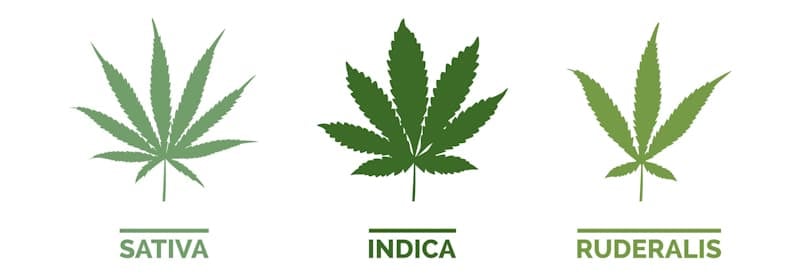When you are writing, you must have paused for a little while before writing a plant name. You do not know if you are to capitalize it or not. These confusions are common in every language. You need to learn the rules of capitalization to clear up this confusion.
You do not capitalize plant names when writing. In modern English, common names of plants and animals are not capitalized. So, when writing words consisting of the names of plant species, you write them in lowercase. However, there are a few exceptions to this rule of capitalization.
Before you go off and start writing, learn the basic, underlying rules of capitalization in the English language. When you learn them, you will not be confused with words that should be capitalized or not.

Are Plant Names Capitalized?
Capitalization in the English language has been one of the major reasons for technical writing errors. There are words that you would capitalize because you think they should be, whereas they are not to be capitalized according to the capitalization rules.
These and other similar circumstances have been the reason for writing errors, and the editors are the ones with the burden of editing and correcting these errors. So, for you to avoid these errors when writing, we will look at the rules of capitalizations.
Plants have three names, genus (common name), species, and cultivar. And when writing these plant names, there is an order you must follow; genus first, species, and cultivar. That is the accepted order when writing, any other order used would be a violation of the rule.
Plant names are not capitalized when writing. Plants are nouns; they are common nouns. Only in exceptional situations are common nouns capitalized. The rule of capitalization is to capitalize the first letter of every proper noun. For example, John is a proper noun, and it is a specific name of a person, so you must capitalize it.
Most plants have several names, a common English name, and a scientific name. although, some plants have different common names in different languages. For example, dandelion is the English common name, Taraxacum officinale is the scientific name, maskros is the Swedish common name, and achicoria silvestre is the Spanish common name.
A plant name is a proper noun, but you do not capitalize it when writing. Surprising? The rule of capitalization is that the first letter of a proper noun must be capitalized, but the first letter of a plant name is not capitalized.
However, we will look at the few exceptions where you must capitalize plant names when writing.
Rules For Capitalizing Nouns
You will notice that every proper noun used in a written text is always capitalized, that is the basic rule for capitalizing nouns. The first letter of a proper noun must be capitalized.
Every noun can be classified as either a proper noun or a common noun. The generic name for an item in a group or class is the common name and the specific name of an item in its proper name.
When we speak, there is little difference if a noun is common or proper because it does not affect the syntax of our speech. However, when we write, we need to distinguish between proper and common nouns so we can know which noun to capitalize.
Let us look at some of the rules for capitalizing plant names when writing.
- If a plant name has two names, you must capitalize the first name. The first name is usually the genus name, and the second name is the species name. For example, the plant Sorbus scopulina is found on mountainsides. “Sorbus” is the genus name, and it is capitalized, and “scopulina” is the species name.
- If there are two names and the second name is in single quotations, you should capitalize both names. The first name is the genus name, and the second name is the cultivar name.
You can see from the rules above that you can only capitalize the genus name and cultivar name of a plant. However, it can be tricky, and you only capitalize the genus name when it does not sound like an English word.
For example, the plant Echinacea purpurea ‘Magnus’ is also called the purple coneflower. The name “Echinacea” is the genus name, and it is capitalized; it does not look like an English word. The next name, “purpurea,” is the species name, and it is not capitalized. The last name in single quotations is the cultivar name, and it is capitalized. The common name “purple coneflower” is not capitalized at all.
Alternative Rules
You have a good understanding of the rules governing the capitalization of plant names. We will look at some of the exceptions to the rules. These exceptions are when the capitalization of plant names are compulsory.
The first exception is to always capitalize plant names if it is the first word in a sentence. Although plant names do not need to be capitalized, when it is the first word in a sentence, you must capitalize it. This is to keep sentence format; it is an established rule in the English language.
If a plant name appears in a title, you must capitalize it. The only words that are not necessarily capitalized in a title are articles, conjunctions, and prepositions. As long as the plant name is part of that title, you must capitalize it.
When there is a proper noun among the name of a plant, you must capitalize the proper noun. If one or more of the words in a plant name is named after a person or a geographical location, the proper noun(s) must be capitalized.
The scientific name of every plant must be capitalized. We mentioned the three names a plant often has, the genus, species, and the cultivar names. You must always capitalize the genus and cultivar names. You must not capitalize the species name.
You can see that there are four exceptions to the capitalization of plant names when writing.
Illustrative Examples
The capitalization of plant names can be tricky and confusing, and we will look at some examples to simplify and clarify it.
Incorrect Capitalization
- June was excited when her boyfriend bought her a bouquet of Roses for Valentine. roses are her favorite flowers.
- The scientific name of the Red Lily flower is Lilium Philadelphicum. That is a weird name for a pretty flower.
- The Rose family, also called rosaceae, consists of plants like quinces, pears, almonds, apples, loquats, and medlars.
Correct Capitalization
- June was excited when her boyfriend bought her a bouquet of roses for Valentine. Roses are her favorite flowers.
- The scientific name of the red lily flower is Lilium philadelphicum. That is a weird name for a pretty flower.
- The rose family, also called Rosaceae, consists of plants like quinces, pears, almonds, apples, loquats, and medlars.
Let us look at what makes the capitalization in the first examples incorrect.
- In the first example, “roses” is capitalized in the first sentence, and it is not capitalized in the second despite being the first word in the sentence.
- In the second example, “red lily” and “philadelphicum” are capitalized. Red lily is the common name, and philadelphicum is the species name.
- In the third example, “rose family” is capitalized, and the genus name “rosaceae” is not capitalized.
Final Thoughts
The wrong capitalization of words is an error you can avoid when writing. Having a basic understanding of the rules of capitalization in the English language is imperative if you want to improve your writing skills.
Every language has rules. These rules differentiate the acceptable and unacceptable in that language. You cannot communicate well without knowing these rules. Create time to read up and watch your writing skills improve.
Shawn Manaher is the founder and CEO of The Content Authority. He’s one part content manager, one part writing ninja organizer, and two parts leader of top content creators. You don’t even want to know what he calls pancakes.


